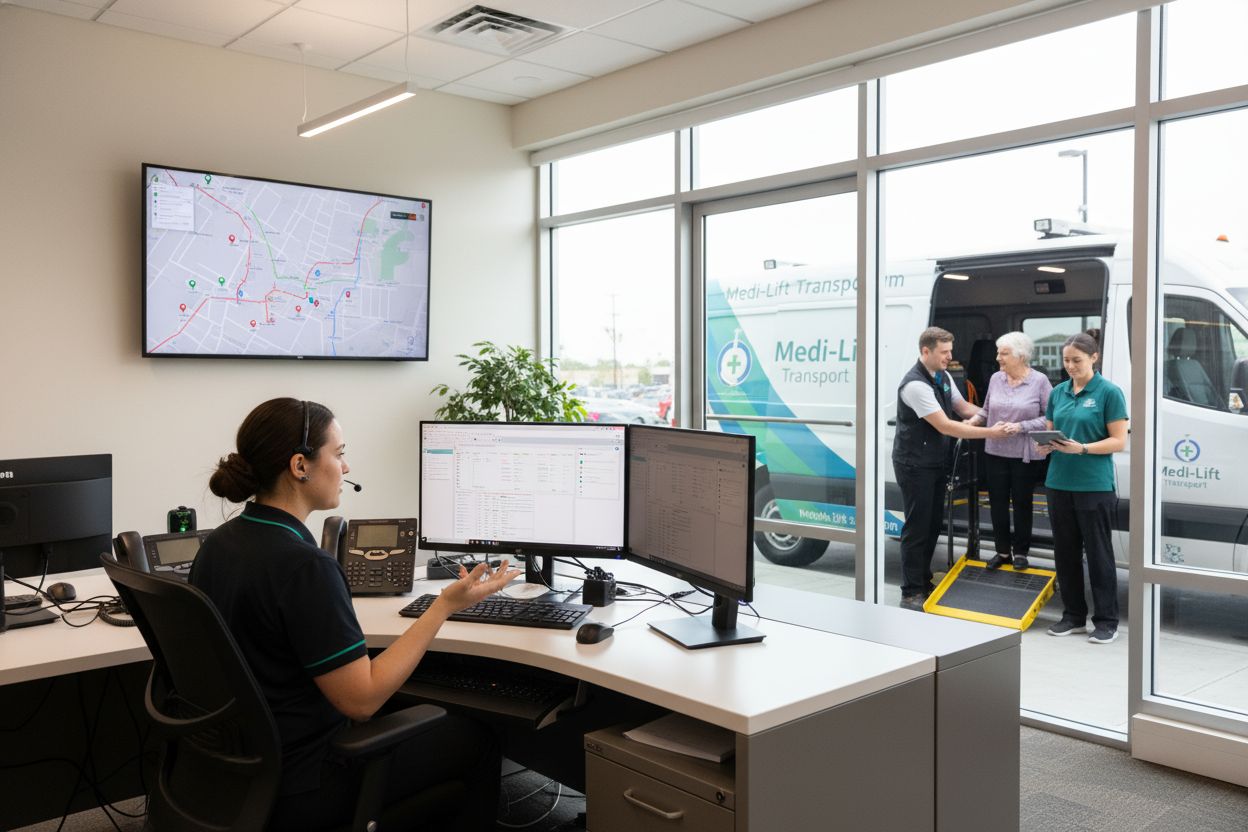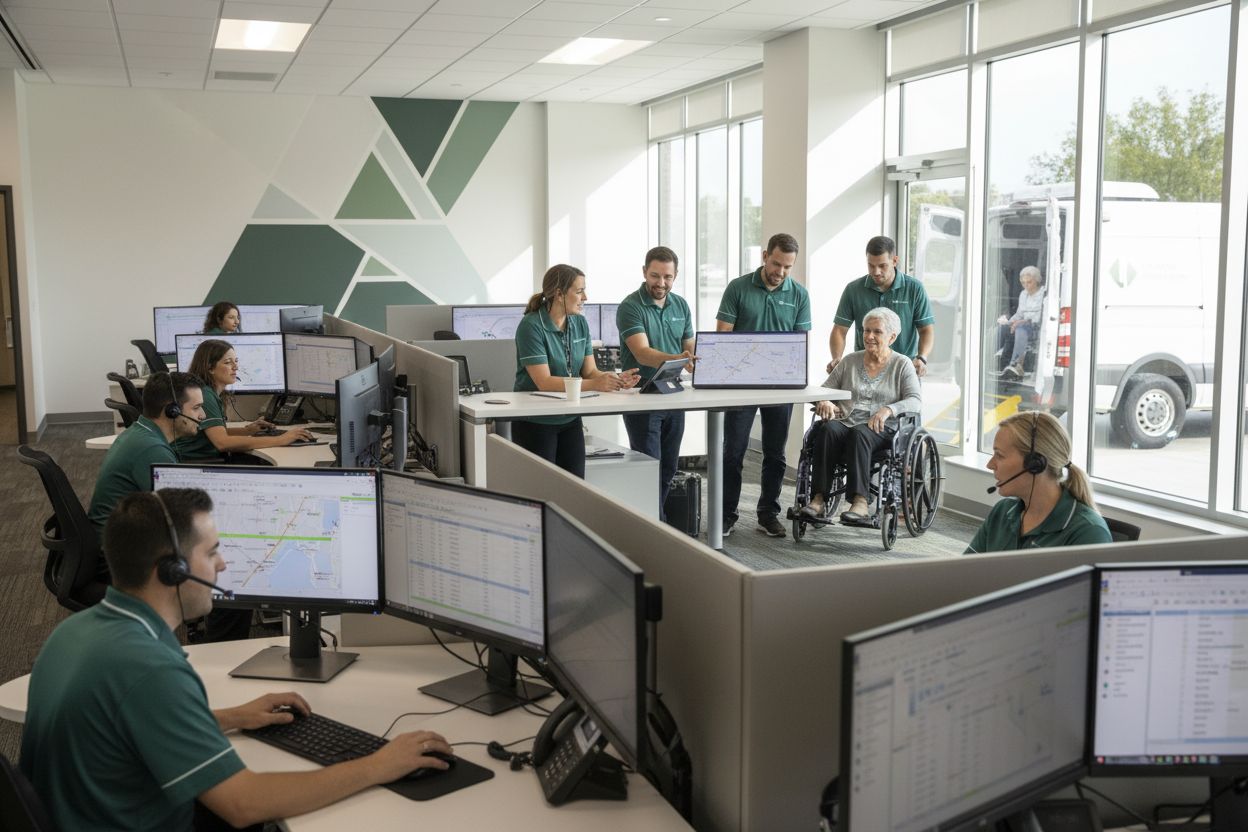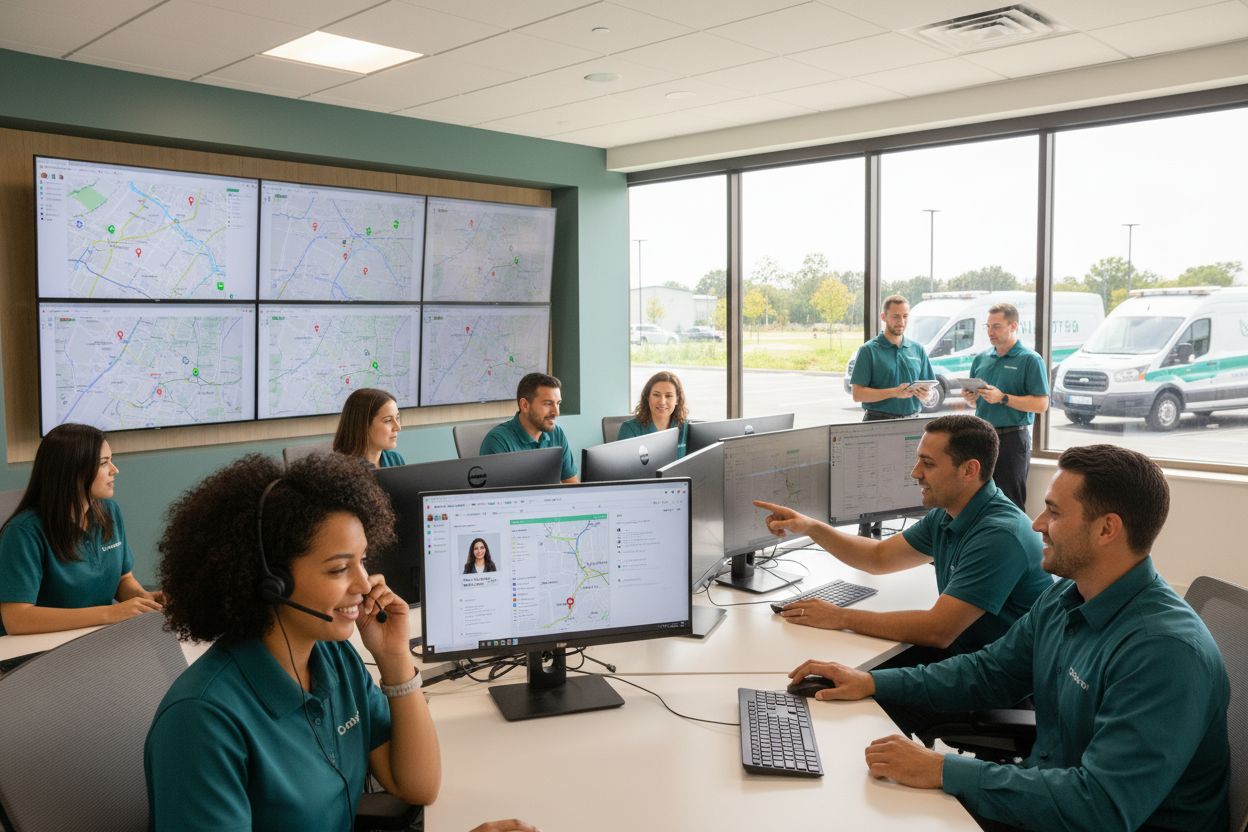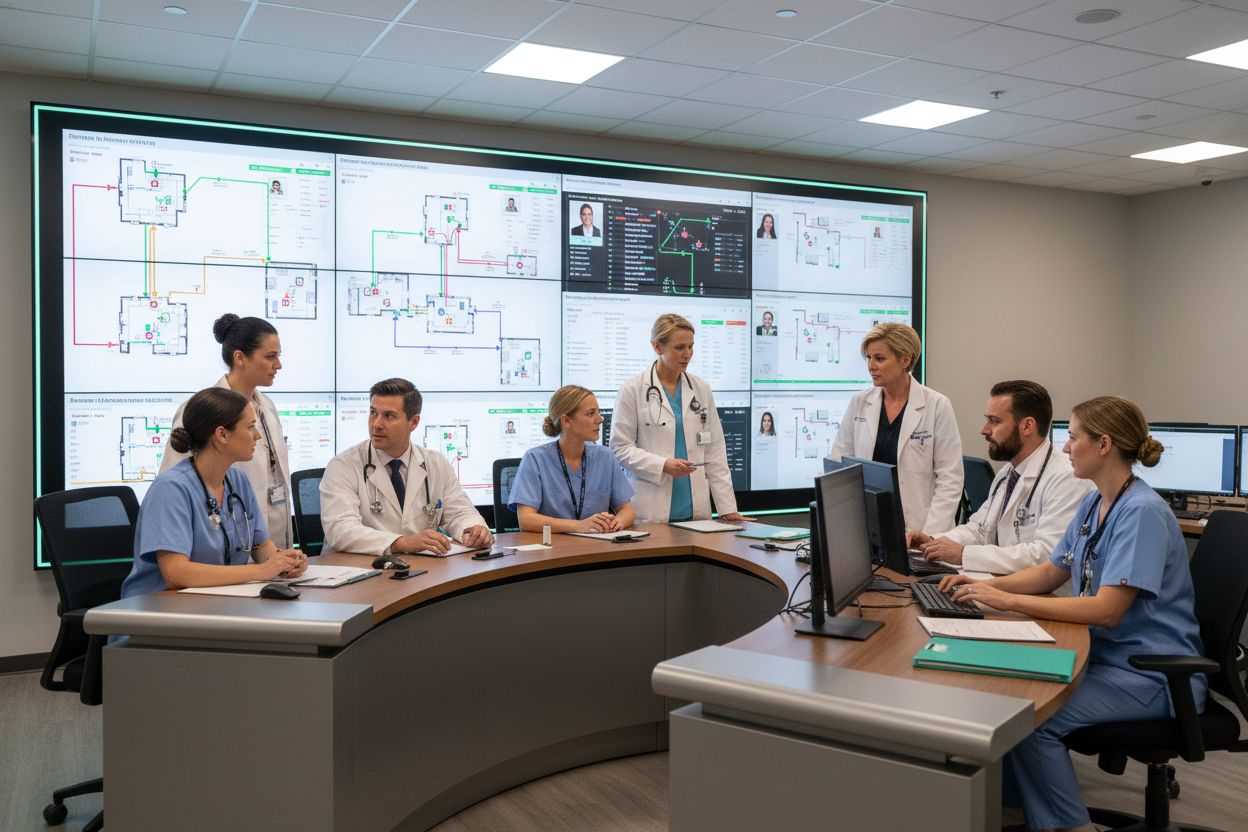NEMT Services Offered: Complete Guide for Providers
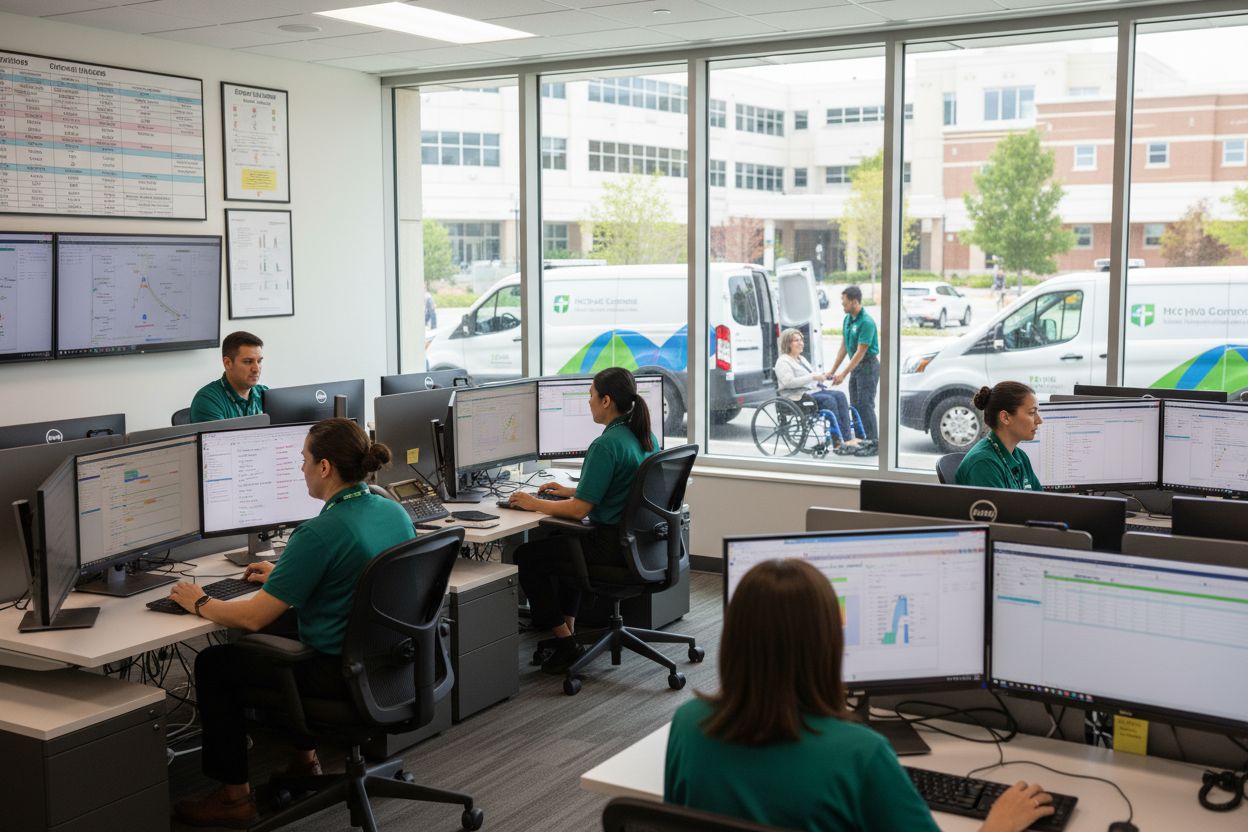
Missed medical appointments cost the US healthcare system billions each year, with transportation barriers playing a major role. For many, especially those relying on Medicaid, simply getting to a doctor’s office is a real challenge. About 4-5 percent of Medicaid beneficiaries use Non-Emergency Medical Transportation services annually, proving how vital these solutions are. Understanding how NEMT works helps patients, families, and providers ensure timely access to essential care.
Key Takeaways
| Point | Details |
|---|---|
| Importance of NEMT | Non-Emergency Medical Transportation is essential for Medicaid beneficiaries, alleviating transportation barriers to healthcare access. |
| Diverse Service Types | NEMT includes various specialized transportation types to meet patient needs, ensuring safe and appropriate transport for different profiles. |
| Technological Advancements | Modern NEMT platforms leverage technology for improved logistics, offering real-time tracking and automated systems to enhance service efficiency. |
| Regulatory Compliance | NEMT providers must adhere to stringent regulatory standards to ensure patient safety, service quality, and operational integrity. |
Table of Contents
- Defining NEMT Services And Their Purpose
- Primary Types Of NEMT Services Offered
- Key Features Of Modern NEMT Platforms
- Regulatory And Compliance Requirements For NEMT
- Cost Structure, Reimbursement, And Common Challenges
Defining NEMT Services and Their Purpose
Non-Emergency Medical Transportation (NEMT) represents a critical healthcare support system designed to help patients overcome transportation barriers when accessing medical services. NEMT services provide specialized transportation solutions for individuals who cannot independently travel to medical appointments due to physical limitations, financial constraints, or lack of reliable transportation options.
According to the National Conference of State Legislatures (NCSL), these services are particularly crucial for Medicaid beneficiaries, enabling access to essential healthcare destinations including:
- Physician offices
- Diagnostic centers
- Therapeutic sites
- Residential medical facilities
- Dialysis centers
- Hospitals
Research from SafeRide Health highlights that approximately 4-5% of Medicaid beneficiaries utilize NEMT annually, underscoring its significant role in eliminating transportation as a barrier to healthcare access. These services ensure that vulnerable populations can receive timely medical care, preventing potential health complications that might arise from missed appointments or delayed treatments.
Beyond mere transportation, NEMT services represent a sophisticated healthcare logistics solution. They accommodate diverse patient needs by providing specialized vehicles equipped to handle mobility-impaired individuals, offering door-to-door assistance, and coordinating transportation for patients requiring specific medical accommodations. By bridging transportation gaps, NEMT services contribute to more equitable and accessible healthcare delivery.
Primary Types of NEMT Services Offered
Non-Emergency Medical Transportation (NEMT) encompasses a diverse range of specialized transportation services designed to meet varying patient mobility and medical needs. According to Route Genie, these services are carefully structured to ensure safe, comfortable transportation for patients with different medical requirements.
The primary NEMT service types include:
- Wheelchair Transportation: Specially equipped vans with lifts and trained drivers who can safely transport mobility-impaired patients
- Stretcher Transportation: Designed for bedridden individuals, typically requiring two-person professional crews for comprehensive patient care
- Ambulatory Services: Sedans designed for patients requiring minimal assistance during transport
Research from Brodas Eating reveals additional specialized NEMT services tailored to specific patient needs, such as:
- Bariatric Transportation: Reinforced vehicles accommodating patients with higher weight requirements
- Pediatric Transportation: Child-specific vehicles with safety features and trained staff
- Dialysis Transportation: Specialized services for patients requiring regular medical treatments
- Oncology Transportation: Vehicles equipped to support cancer patients during treatment journeys
- Long-Distance Medical Transportation: Services designed for patients needing extended travel for specialized medical care
These diverse NEMT service types demonstrate the healthcare transportation sector’s commitment to providing comprehensive, patient-centered mobility solutions. By offering targeted transportation services, NEMT providers ensure that every patient can access critical medical care regardless of their individual mobility challenges or specific healthcare needs.
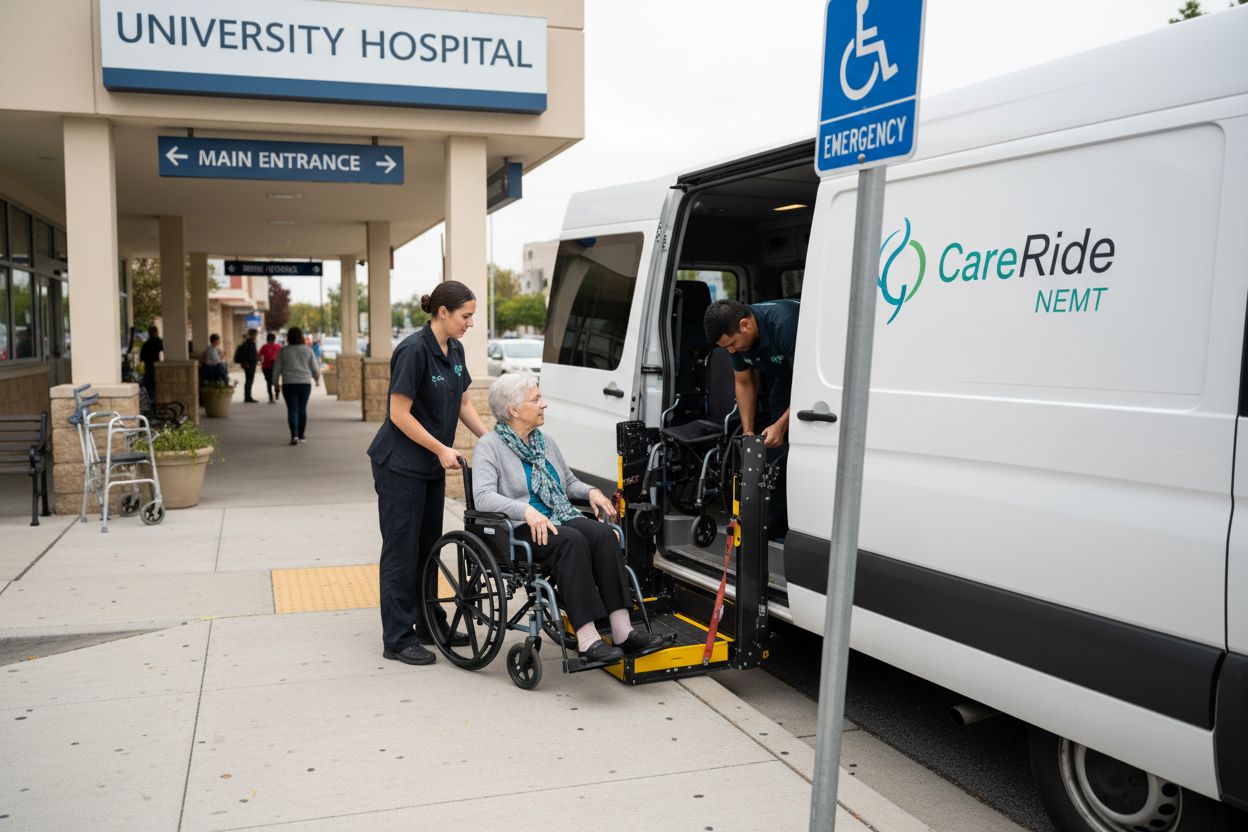
Here’s a summary comparing the primary NEMT service types:
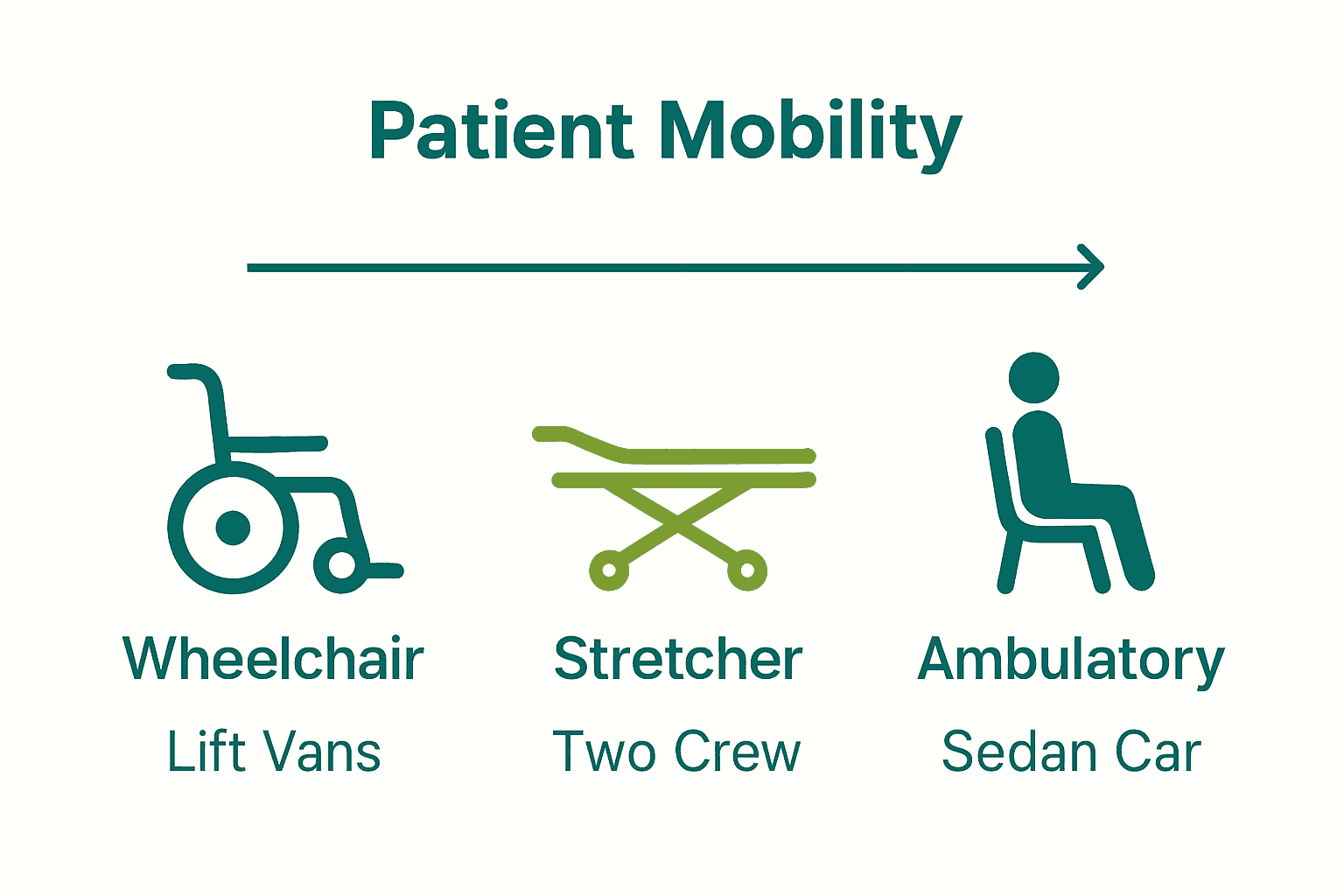
| Service Type | Patient Profile | Key Features |
|---|---|---|
| Wheelchair Transportation | Mobility-impaired | Lift-equipped vans Trained drivers Secure seating |
| Stretcher Transportation | Bedridden | Two-person crews Flat stretcher beds Comprehensive care |
| Ambulatory Services | Minimal assistance | Sedan vehicles Basic support Cost-effective |
| Bariatric Transportation | Higher weight needs | Reinforced vehicles Special equipment Extra space |
| Pediatric Transportation | Children | Child safety seats Specialized staff Comfort features |
| Dialysis/Oncology Transportation | Chronic care patients | Routine scheduling Support staff Flexible timing |
| Long-Distance Medical Transportation | Remote care seekers | Extended travel Comfort amenities Trip coordination |
Key Features of Modern NEMT Platforms
Modern Non-Emergency Medical Transportation (NEMT) platforms are revolutionizing healthcare logistics through sophisticated technological integrations. According to research from Globe Newswire, these advanced platforms are transforming transportation services with cutting-edge digital capabilities.
Key technological features of modern NEMT platforms include:
- Real-Time GPS Tracking: Providing precise location monitoring and route optimization
- AI-Driven Routing: Dynamic dispatch systems that enhance transportation efficiency
- Safety Monitoring Technology: Ensuring passenger security and vehicle performance
- Electronic Trip Logging: Comprehensive digital documentation for compliance and billing
- Passenger Mobile Applications: Enabling convenient booking and real-time trip updates
MedCity News highlights that next-generation NEMT infrastructure incorporates advanced capabilities such as predictive analytics, automated compliance tools, and seamless interoperability with Electronic Health Records (EHRs) and health plan systems. These innovations collectively improve reliability, reduce per-mile transportation costs, and minimize potential fraud through digital trip verification.
By integrating sophisticated technologies, modern NEMT platforms are not just transportation services but comprehensive healthcare mobility solutions. They bridge critical gaps in patient access, providing reliable, efficient, and technologically advanced transportation that supports broader healthcare delivery objectives and improves overall patient experience.
Regulatory and Compliance Requirements for NEMT
Non-Emergency Medical Transportation (NEMT) operates within a complex regulatory framework designed to ensure patient safety, service quality, and operational integrity. According to the Centers for Medicare and Medicaid Services (CMS), comprehensive guidelines distinguish NEMT services from emergency transportation, establishing critical standards for service delivery.
Key regulatory requirements for NEMT providers include:
- Driver Qualification Standards: Comprehensive background checks, valid professional licenses, and specialized medical transportation training
- Vehicle Acceptance Criteria: Mandatory safety inspections, accessibility features, and maintenance documentation
- Patient Privacy Compliance: Adherence to HIPAA regulations and secure patient information management
- Insurance and Liability Coverage: Minimum insurance requirements and comprehensive liability protection
- Fraud Prevention Protocols: Rigorous documentation and digital verification systems
Globe Newswire highlights the evolving regulatory landscape, which now emphasizes performance-based accountability. Modern compliance frameworks increasingly focus on measurable outcomes such as:
- Transportation timeliness
- Patient safety metrics
- Customer satisfaction ratings
- Operational transparency
These comprehensive regulatory requirements transform NEMT from a simple transportation service into a sophisticated, accountable healthcare logistics solution. By maintaining stringent standards, NEMT providers ensure reliable, safe, and patient-centered medical transportation that meets the highest professional and ethical benchmarks.
Cost Structure, Reimbursement, and Common Challenges
Non-Emergency Medical Transportation (NEMT) reimbursement represents a complex financial ecosystem with significant operational challenges. According to Tobi Cloud, Medicaid rate structures are determined through intricate federal guidance, state-specific cost studies, and individual provider agreements, creating a multifaceted compensation landscape.
Key financial challenges for NEMT providers include:
- Payment Delays: Extended reimbursement timelines affecting cash flow
- Documentation Complexity: Extensive claim verification processes
- Eligibility Verification: Time-consuming patient qualification checks
- Rate Variability: Significant compensation differences across state jurisdictions
- Claims Processing: Intricate submission requirements increasing administrative burden
NEMT Entrepreneur highlights that modern technology is transforming these challenges through innovative solutions such as:
- Real-time eligibility verification systems
- Automated billing platforms
- Digital claims processing tools
- Integrated documentation management
Successful NEMT providers are increasingly adopting technological approaches to streamline financial operations, reduce administrative overhead, and optimize reimbursement processes. By leveraging advanced digital infrastructure, they can mitigate traditional financial obstacles and create more predictable, efficient revenue cycles.
Unlock Frictionless NEMT Operations with a Modern Logistics Platform
Are you struggling with the daily complexity of NEMT coordination, reimbursement delays, and increasing compliance requirements? As highlighted in the guide above, every missed detail or outdated system can create barriers for your patients and strain your operation. Imagine the impact of missing appointments, last-minute scheduling changes, or inefficient routing on patient health and your bottom line. With rising pressure to optimize documentation, eligibility verification, and scheduling, NEMT providers need a smarter way to manage it all.
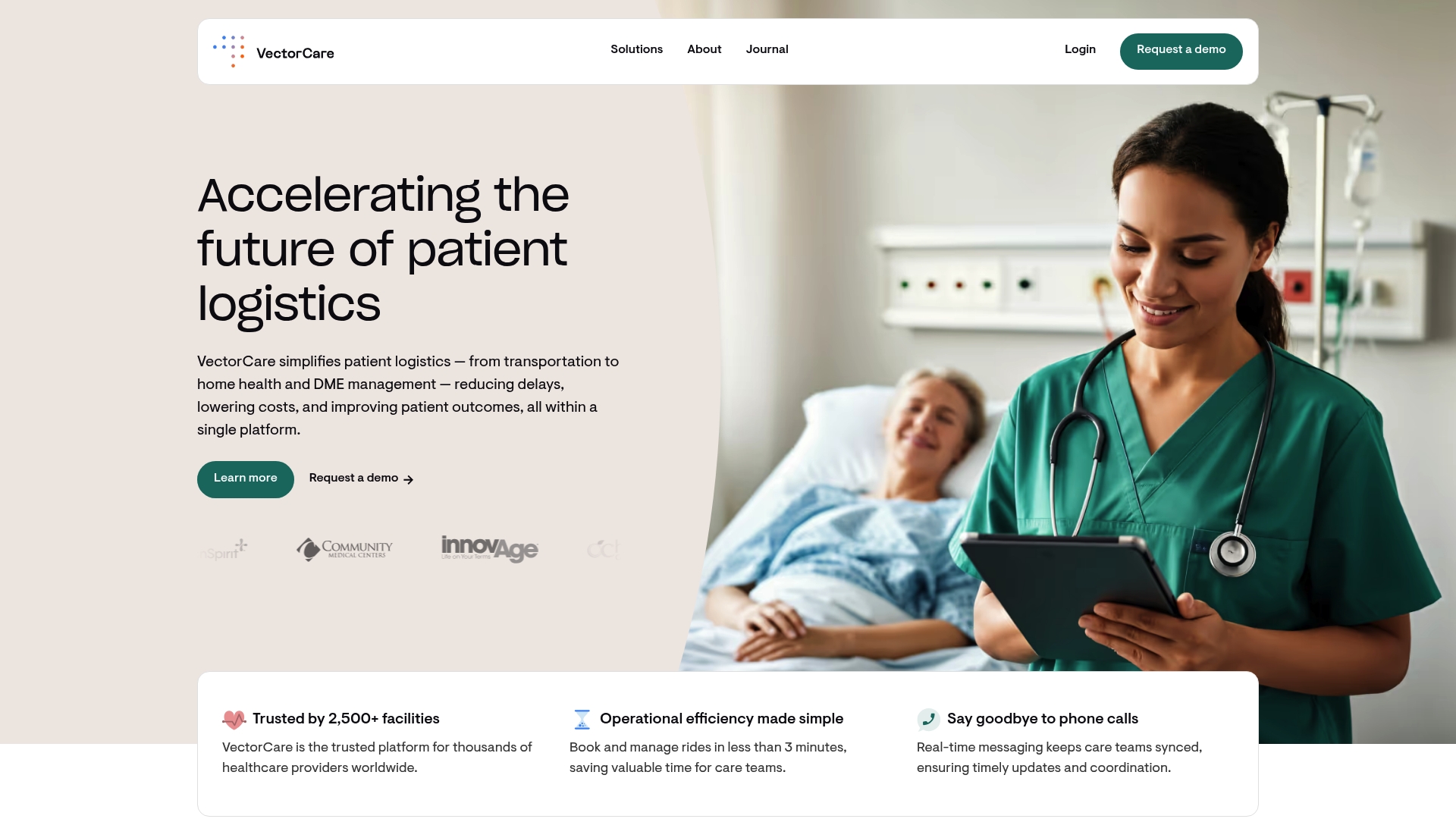
Why let these challenges slow you down? VectorCare’s digital platform is purpose-built to address the exact pain points covered in this article. Empower your team with real-time scheduling, secure communication, and smart workflows that align with today’s regulatory and patient care standards. Experience end-to-end visibility, automated dispatch, and integrated compliance tools that simplify reimbursement and strengthen reliability. Make the move now to enhance patient care and dramatically cut operational headaches. Explore how you can instantly streamline your NEMT services and start transforming outcomes by visiting VectorCare’s full platform overview.
Frequently Asked Questions
What are the main types of NEMT services offered?
The main types of Non-Emergency Medical Transportation (NEMT) services include Wheelchair Transportation, Stretcher Transportation, Ambulatory Services, Bariatric Transportation, Pediatric Transportation, Dialysis Transportation, Oncology Transportation, and Long-Distance Medical Transportation. Each service is tailored to meet specific patient mobility and medical needs.
How do modern NEMT platforms enhance patient transportation?
Modern NEMT platforms enhance patient transportation through features like real-time GPS tracking, AI-driven routing, safety monitoring technology, electronic trip logging, and passenger mobile applications for convenient booking and updates.
What regulatory requirements do NEMT providers need to meet?
NEMT providers must meet several regulatory requirements, including driver qualification standards, vehicle acceptance criteria, patient privacy compliance, insurance coverage, and fraud prevention protocols. These ensure safe and reliable transportation.
What are common challenges faced by NEMT providers regarding reimbursement?
Common challenges include payment delays, documentation complexity, eligibility verification, rate variability, and claims processing issues. Providers often utilize technology to streamline these processes and improve financial operations.
